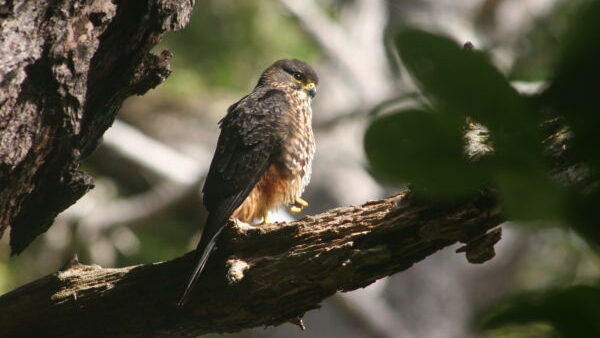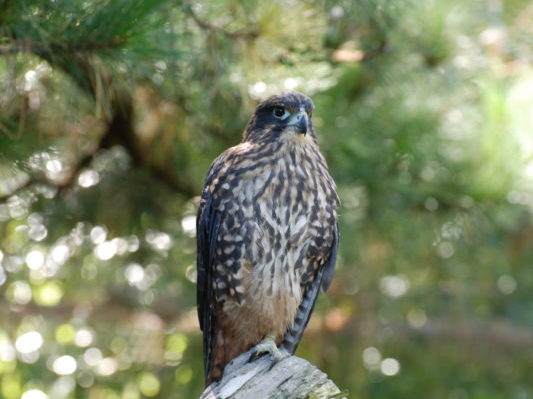‘Raptors vs aliens’ – it sounds like the latest Hollywood blockbuster, but it’s actually the title of a paper published in the NZ Journal of Zoology at the end of last year. Written by NZ Landcare Research scientists A.S. Glen and R.P. Pech, along with two Australian authors, the research investigates the complex relationship between two Australian predators – native wedge-tailed eagles and introduced foxes – and also discusses the implications for similar raptors vs aliens predator interactions in New Zealand.

The authors begin by pointing out that much research focuses on predator/prey relationships, including the effects that introduced mammal predators have on native prey animals. Less research to date has looked at the relationships between top-order predatory birds and introduced mammal predators. Are they direct competitors? Do they also prey on each other? Do they benefit each other, for example by providing carrion leftovers?
“Top-order predators can have a strong influence on ecological communities. Increasingly, it is being recognised that predators have strong impacts on each other… By failing to consider the full range of predators in a system, important ecological interactions can be overlooked. Interactions such as exploitation competition, interference competition and facilitation can all occur between avian and mammalian predators.”

Top order predators may compete for the same prey.
“…Dietary overlap also occurs between avian and mammalian predators in New Zealand. For example, stoats prey mainly on birds as do New Zealand falcons. Both predators may also consume substantial volumes of mammalian prey such as rodents, hares and rabbits and both occasionally feed on carrion. Rabbits are also a staple prey of Australasian harriers in parts of New Zealand, potentially placing these raptors in competition with mustelids and feral cats.”
But competition for food is only one aspect of sharing a common diet. Scoring some tasty leftovers may be a positive benefit of dining from the same menu as your fellow predators.
“While dietary overlap is often a likely indicator of competition, it can also result from facilitation… in New Zealand harriers scavenge rabbit carcasses killed by feral cats. In these cases the larger predator may benefit populations of the smaller one by providing abundant carrion.”
And what about introduced predators as a food source themselves? Could our top-order native raptors prey on some of the smaller introduced predators? Could harrier hawks and falcons contribute to introduced mammal control?
“In the Marlborough region of New Zealand, Kross et al. twice recorded New Zealand falcons consuming stoats. Conversely, New Zealand falcons are also vulnerable to nest predation by mammalian carnivores such as stoats and ferrets.”
So the benefits are likely to be mixed. But the threat of predation by birds may have an influence on the behaviour of introduced predators or even their local abundance. The authors give an example:
“In New Zealand, stoats were mainly nocturnal in a braided river valley with little cover (Dowding & Elliott 2003), but mostly diurnal in forested habitat (R. Martin, unpubl. data, cited in King & Murphy 2005). Vulnerability to avian predators is one possible explanation for this difference in activity patterns.”
Based on their study of Australian eagles and introduced foxes, the authors make several recommendations for further research into the similar New Zealand situation.
“In some areas of New Zealand where falcons were formerly extirpated, they have been reintroduced with the dual aims of promoting falcon recovery and controlling pest birds in commercial vineyards. Further research could compare the activity patterns of mammalian predators such as stoats before and after falcon reintroduction, and at falcon-free comparison sites… We suggest that the potential role of native raptors in suppressing invasive predators deserves further exploration. Conserving birds of prey may have the potential to reduce the impacts of invasive species not only on biodiversity, but also on primary production – a ‘win-win’ situation.”
The full article is published in the New Zealand Journal of Zoology, where only the abstract is freely available.
Raptors vs aliens: can indigenous birds of prey help control invasive predators? (2016)
Readers without institutional access to the NZ Journal of Zoology, may be able to access the full article for free through Researchgate.

